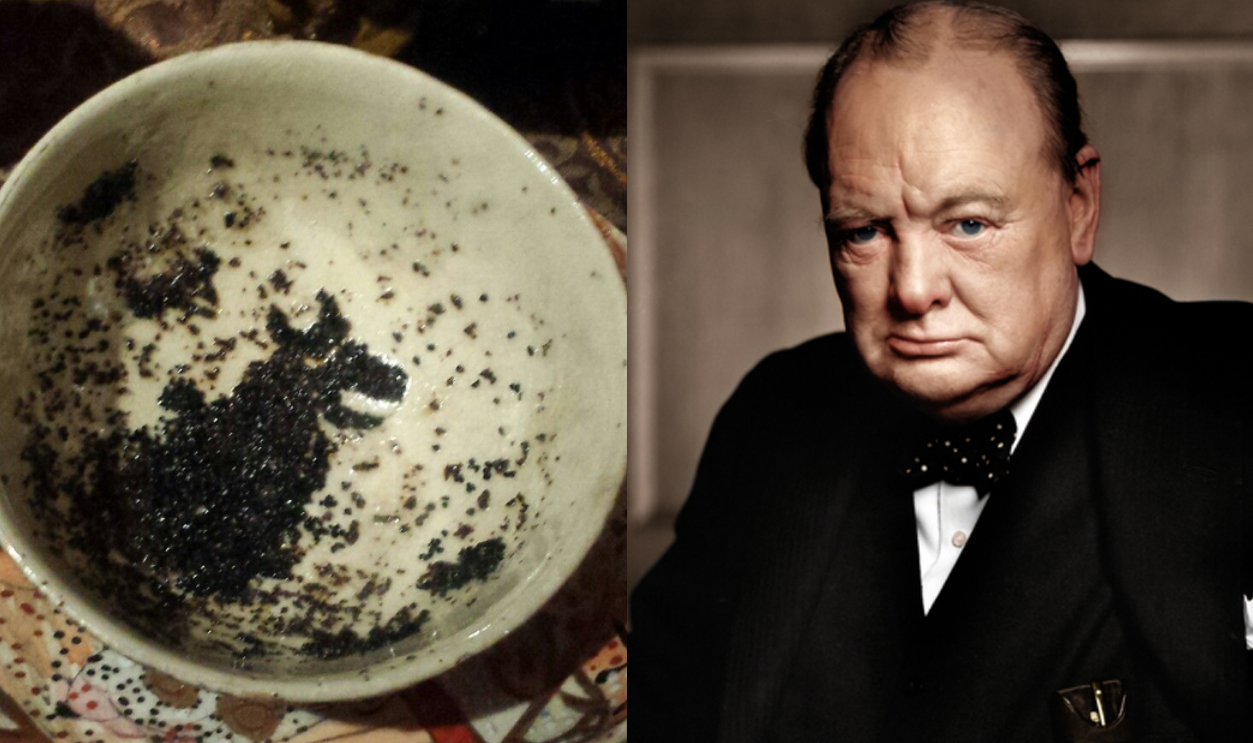Mind-Blowing Facts About The Sad History Of Mental Illness
With its historical roots firmly planted in the belief that mental illness was the result of being possessed by evil spirits, or a punishment for some horrible wrong-doing, it is easy to understand how misconceptions arose and were carried on throughout history—but that's not even the worst of it.

1. Mass Hysteria
During the Victorian Era, women who experienced medical conditions and symptoms were considered to be "unbalanced". Examples of these symptoms include menstruation-related anger, pregnancy-related sadness, disobedience, chronic fatigue, and anxiety. Women who presented these symptoms would be labeled as suffering from "hysteria," a term that is now acknowledged to be rooted in sexism and which has no clinical significance today, and placed in institutions where they had few or no rights. Any disobedience was met with severe punishment.

2. Do No Harm
Ancient civilizations like the Romans and Egyptians believed mental illnesses were a matter of religious nature. It was often believed that the afflicted were possessed by demons and often performed exorcisms as a form of treatment. It wasn’t until the 5th century BCE that the Greek physician Hippocrates, of "do no harm" fame, developed the idea that mental illnesses were physiological afflictions. He recommended a change in environment, living conditions, or occupation to help treat patients.
3. Jailed and Mistreated
In early American history, people with mental illnesses were institutionalised and subjected to horrible conditions and savage treatment. Once there, they were often not permitted to leave. In the 1840s, a Boston woman named Dorothy Dix began to research the conditions in traditional mental health institutions. She outlined horrific cases in which patients were chained to their beds, kept in filthy conditions, and routinely abused. She advocated a change in procedure that would take a kinder approach to treating the mentally ill. It was one of the first documents to outline compassionate care.
4. Sources of Stigma
Mental health stigma is divided into two distinct categories: social stigma, which arises from the prejudicial attitudes and discriminating behavior directed towards individuals with mental illnesses, and perceived or self-stigma, which involves the person with mental illness internalizing their perceptions of discrimination leading to shame and poor treatment outcomes. Stigmatising attitudes towards mental illnesses, such as the belief that those with a mental illness are dangerous to others, or that the illnesses are self-inflicted, are still prevalent today, and are reinforcing the stigma surrounding mental health. Due to these misconceptions, those who need help are often afraid to reach out for fear of ridicule, or, as in some cultures based in the tradition of pride, a fear of becoming an outcast.
5. The Purge
With its roots in Ancient Greek medicine, practices such as bloodletting and purging gained popularity in Western medicine in the 17th century. Thomas Willis argued that mental illnesses stemmed from an internal biochemical relationship, and advocated bleeding, purging, and even vomiting to help correct those imbalances. These practices were intending to cleanse the body and restore it to its proper working order.
6. Girlfriend in a Coma
Introduced in 1927, insulin-induced coma therapy was used to treat those suffering from mental illness up until the ‘60s. Physicians would deliberately put patients into low blood sugar comas, believing that large fluctuations in insulin levels could alter the function of the brain. The comas could last anywhere from one to four hours and would sometimes result in a prolonged coma, where the patient failed to respond to glucose, or sometimes even death. The mortality rate varied between one and ten percent.
7. Induced Cruelty
Similar to inducing comas, physicians would also use a stimulant medication to trigger seizures in their patients. This was known as Metrazol therapy. The seizure would begin approximately one minute after the patient was injected and often resulted in fractured bones, torn muscles, and other adverse effects. This therapy would be administered several times a week. It was finally withdrawn from use by the FDA all the way back in… 1982? Yikes.
8. Celebrities Speak Up
Recently, many celebrities have been speaking out about their own experiences with mental illnesses. Dwayne "The Rock" Johnson revealed that he battled severe depression, noting that he has "battled the beast more than once". He also pointed out that the stigma surrounding the issue is extremely prevalent for boys and men. Mariah Carey also revealed that she has been diagnosed with bipolar disorder, saying that until recently she had been living in denial and isolation due to the constant fear that someone would expose her. She is now in therapy and taking medication for her condition, ready to take on some new career challenges.
9. Simple Shocking
Electro-convulsive shock therapy (ECT) was first developed in 1938. It involves passing electric currents through the brain to trigger a brief seizure. In its early use, ECT was received very negatively by the population because the high doses of electricity were administered without any anesthetic. Patients would often suffer from broken bones due to the convulsions, along with memory loss and other harmful side effects. ECT is surprisingly still sparingly used today for treatment of persistent depression, as it often works when other treatments are unsuccessful.
10. Paging Dr. Freud
Psychoanalysis and talk therapy aim to bring unconscious or deeply buried thoughts and feelings to the conscious mind to be examined. Through this, the patient is able to identify how his or her past experiences and memories have shaped his or her current emotions and impulses. The therapy is said to have got its start in the early 1900s and was widely influenced by Dr. Sigmund Freud. He developed a number of theories that attempted to explain erratic behaviours, and devised therapies for patients like the "talking cure".
Freud also helped to pioneer the notion that dreams held the secrets of our subconscious mind. That idea is less popular today...although we still don't know everything how and why we dream.
11. From Bethlehem to Bedlam
Founded in 1247, the Priory of St. Mary of Bethlehem was a hospital devoted to healing sick paupers. The establishment later became known as Bethlehem Hospital, which began accepting patients who displayed symptoms of mental illnesses. By 1403, the "lunatics" there formed the majority of the hospital’s patients, and made it England’s first, and perhaps most infamous, mental institution. The regime of the hospital was a mixture of punishment and religious devotion. Items such as chains, manacles, locks, and stocks began to appear in the hospital’s inventory. While it was a religious duty to care and feel compassion for people afflicted by mental illnesses, it was also believed that corporal punishment could cure some conditions, and that isolation would bring a person back to his or her senses. Londoners later referred to the hospital as "Bethlem" and often pronounced it as "Bedlam". The word "bedlam" soon entered everyday speech to signify a state of madness, chaos, and the irrational nature of the world.
12. Deinstitutionalisation
The ‘50s and ‘60s brought about a major movement whereby patients were removed from psychiatric hospitals and began treatments as outpatients. Those who required segregation from the general population were placed in more appropriate, less restrictive dwellings. This shift also brought about the development of antipsychotic substances to relieve symptoms and allow patients to have a more manageable life outside of the hospital. Over a 30-year period, the number of institutionalised patients dropped from 560,000 in the 1950s to 130,000 in 1980.
13. Whirling Blackness
In 1953, Sylvia Plath attempted to take her own life. She wedged herself into a crawlspace beneath her mother’s house and ingested 40 sleeping pills. Having vomited up most of the pills, she remained there for three days while officers, family, and strangers searched for her. She later described this time as a "whirling blackness that I honestly believed was the eternal oblivion". After being discovered, her mother admitted her to the McLean Psychiatric Hospital for treatment. Much of this experience is recounted in her book The Bell Jar.
14. The Wasting Disease
Anorexia was not commonly diagnosed until the second half of the 20th century, but it did exist before that time. The first descriptions of anorexia nervosa in the Western word date back to the 12th and 13th centuries, the most notable being the case of St. Catherine of Siena, who denied herself food as a part of a spiritual denial of the self. By the 16th century, those who lived an ascetic live were considered to be witches and subsequently burned at the stake. The 17th to 19th centuries noted several clinical descriptions of "wasting disease," which is believed to be linked to anorexia. In the early 20th century, anorexia was considered to be an endocrine disorder and treated with pituitary hormones. Anorexia nervosa remains the deadliest of all psychiatric disorders, with a 5% to 10% death rate within 10 years of developing symptoms, and an 18% to 20% death rate within 20 years if left untreated.
15. Binging and Purging
First reliably described in the Middle Ages, bulimia was practiced by the wealthy, who would vomit during meals so that they could consume more. The first clinical paper on the condition was published in 1979 and was referred to as an ominous variant of anorexia nervosa. The number of cases of both anorexia and bulimia escalated in the 1970s and 1980s, and there continues to be an increase in the number of cases of bulimia especially. Eating disorders in adolescents are strongly predicted by the earlier presence of depression, bipolar disorder, and anxiety. There is also evidence suggesting that a genetic component may be at play, perhaps relating to inherited differences in serotonin receptors.
16. The Book of Hearts
The Ebers Papyrus is an ancient Egyptian papyrus of herbal knowledge dating to circa 1550 BCE. Mental disorders such as depression, dementia, and thought disturbances common with schizophrenia are detailed in a chapter called the "Book of Hearts". It appears that the heart and mind were synonymous to the ancient Egyptians. Physical illnesses were believed to be symptoms of the heart originating from the blood vessels. I guess that’s certainly more forward-thinking than blaming it on demons.
17. Fragmented Thinking
Although the non-specific concept of madness has been around for many thousands of years, schizophrenia was only classified as a distinct mental disorder by Emile Kraepelin in 1887. He was the first to note the distinction from manic depression, and believed that dementia praecox (early dementia, different from Alzheimer’s) was primarily a disease of the brain. Eugene Bleuler later coined the term schizophrenia in 1911 which comes from the Greek words schizo meaning split, and phrene meaning mind. It was meant to describe the fragmented thinking people with schizophrenia experience, and not the idea of split or multiple personalities. In 1952, a drug called chlorpromazine was developed and used as a drug for treating schizophrenia, however, users suffered severe side effects such as uncontrollable shaking.
18. Prozac Nation
Antidepressants are often prescribed to treat depression, as well as anxiety, pain, and insomnia. The most popular types are called selective serotonin reuptake inhibitors (SSRIs), which include medications such as Celexa (citalopram), Prozac (fluoxetine), and Zoloft (sertraline), among others. Other types of antidepressants are called serotonin and norepinephrine reuptake inhibitors (SNRIs) which are similar to SSRIs and include Effexor (venlafaxine) and Cymbalta (duloxetine). These are popular medications since the side effects are less apparent than with older classes of antidepressants, and they seem to help a broader group of depressive and anxiety disorders.
19. Mania and Melancholia
Bipolar disorder was first observed and studied in the second century by physician Aretaeus of Cappadocia. He identified mania and depression as having a common link and believed that they were two forms of the same disease. The Greeks and Romans thus coined the terms mania and melancholia. They used the waters of northern Italian spas to treat agitated or euphoric patients, believing that lithium salts were absorbed into the body as a naturally occurring mineral. While the ancient Greek philosopher Aristotle celebrated and thanked melancholia for the gifts of the creative minds, the Middle Ages saw those who were afflicted denounced as being guilty of some wrongdoing, their illness being a manifestation of their bad deeds. Modern treatments for Bipolar Disorder now include the FDA approved drug form of lithium, along with other antipsychotics and mood stabilisers in conjunction with supportive cognitive behavioral therapy and insight-oriented counselling.
20. Let’s Talk
Dialectical Behavior Therapy (DBT) focuses on the concept of mindfulness and being aware of present emotions. It teaches the patient skills for managing and coping with strong emotions with a goal of reducing self-destructive behavior, managing stress, and improving relationships. It seeks a balance between accepting and changing behaviors. Transference-Focused Therapy (TFP) is designed to help patients understand their emotions and intrapersonal problems through the relationship between the patient and therapist. Patients are then able to apply what they have learned to other relationships and situations. Mentalization-Based Therapy (MBT) helps patients to identify and understand what others may be thinking and feeling. These three therapies are commonly used to help people with Borderline Personality Disorder (BPD), with DBT being the most studied and most effective.
21. I Get by With a Little Help From…the Government
Mental health and substance use treatment systems in America have undergone profound changes since deinstitutionalisation began in the 1960s. An evolving federal-state partnership emerged promoting the development of community-based care. The federal government works to partner with the states, providers, advocates, families, and people in treatment to fund and regulate treatment systems, insurers, and providers, protecting the rights of those in treatment.
22. The Black Dog
Prime Minister Winston Churchill was among the leaders who led the world to the defeat of The Fuhrer in World War II. In his own writings, he described suffering from the "black dog" which was his term for severe and serious depression. He also described his use of booze for self-medication during these times. Despite his struggles with depression, he was able to make great contributions through his own personal determination, believing that there was a nation and a world that depended on his efforts to lead Britain and the world in the defeat of their common and formidable enemy of Nazism.
23. Quack Medicine
Trephination or trepanation was one of the earliest and most gruesome forms of mental health treatment. It was a fairly common practice whereby a small part of the skull was removed using an auger, bore, or saw. This process dates back at least as far as 7,000 years, and was done by cultures all over the world. Though we can't be sure why every single group practiced trepanning, it was frequently done to cure "madness" by releasing the evil spirits that were possessing the afflicted person.
24. The Most Terrifying Cure of All
Lobotomies were a widely accepted treatment for mental illnesses in the ‘40s and ‘50s. It consisted of surgically cutting or removing the connections between the prefrontal cortex and frontal lobes of the brain. It was designed to disrupt the circuits of the brain and was completed in five minutes. The lobotomy treatment won António Egas Moniz the Nobel Prize in Physiology and Medicine in 1949 and was used until the mid-1950s, when the first psychiatric medicines were introduced and the severe side-effects of lobotomies became too blatant to ignore any longer.
Sources: 1, 2, 3, 4, 5, 6, 7, 8, 9, 10, 11, 12, 13, 14, 15, 16, 17

































